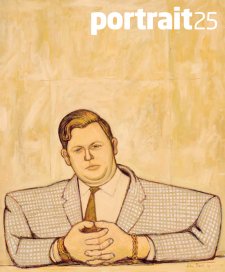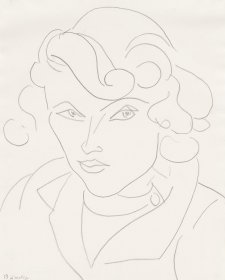When one considers the road travelled thus far, the theme of The Journey for the final Headspace student portrait exhibition at the National Portrait Gallery Commonwealth Place could not be more apt.
And, what a journey it’s been! Although each year the Headspace exhibitions have grown exponentially in size as the word about this unique learning opportunity spread, the central tenet of the project has remained constant: for secondary students to engage with portraiture as a means of self-expression.
When one considers the road travelled thus far, the theme of The Journey for the final Headspace student portrait exhibition at the National Portrait Gallery Commonwealth Place could not be more apt. And, what a journey it's been! Although each year the Headspace exhibitions have grown exponentially in size as the word about this unique learning opportunity spread, the central tenet of the project has remained constant: for secondary students to engage with portraiture as a means of self-expression. There are a number of features that set the Headspace project apart from other, often State-based, student art exhibitions such as Artexpress in New South Wales, Top Arts VCE in Victoria and Year 12 Perspectives in Western Australia.
Firstly, Headspace is open to students in Years 7–12, whereas the other exhibitions showcase only the best graduating Year 12 assessment work for visual/studio arts. Secondly, each year since the project’s inception, students have taken up the challenge to create work in response to a theme; Headspace (2000), Hearts + Heads (2001), Being Me (2002), Facing Memory (2003), Crystal Gazing (2004), Who Am I? (2005), Me and My Place (2006) and now The Journey (2007). The thematic nature of Headspace is another characteristic that differentiates the project from other student art exhibits, as works are selected on the basis of a symbiosis between the work itself and the accompanying student’s statement that links the work to the year’s theme. The third aspect that marks the uniqueness of the Headspace project is its ever-increasing scope. What began as an invitational exercise for students from within a 200km radius of the National Portrait Gallery in Canberra has now grown to encompass schools along the eastern seaboard as far north as Brisbane, throughout western New South Wales and Victoria, Gippsland and south to Melbourne.
The Headspace project’s incremental growth beyond its original catchment has often occurred as teachers move to new schools and introduce Headspace to a new set of pupils – apposite for an initiative from a national cultural institution to be reaching out across the country. Headspace’s increasing geographic reach is matched by its impact on other levels; participating teachers credit Headspace with altering the way art practice is perceived within their schools in a positive way.
Headspace is not an art competition; rather it is driven by the spirit of participation and to this end, in recent years, certificates of participation are issued to exhibiting students so their involvement in the Canberra exhibition is acknowledged at the school level even if they don’t have the opportunity to visit the show. Yet Headspace doesn’t only affect participating students and teachers. Over the years it has become evident that these exhibitions have broad reach into the community, whether it be through a personal connection with an exhibitor as family member, friend, colleague or educator or links into the museum and educational communities.
The notion of Headspace as forum is best demonstrated at each year’s opening event – with families and friends coming from far and wide to share the energy and vitality of the project coupled with the personal pride students take in having their work included in a nationally significant exhibition and given the due respect and treatment that any artist displayed in the Portrait Gallery receives.
In the eight years that the Headspace project has been running, the program has subtlety shifted to meet learning needs and keep pace with exhibition development technologies. In recent years the Gallery has facilitated Headspace preparatory workshops for participating students to come to the Gallery and work with museum educators to explore the exhibition theme through art making and to spark ideas for the work they ultimately submit. In 2007 the submission process also changed. Now teachers send digital images of student works to the Gallery from which the exhibition is selected, whereas formerly works were sent to the Gallery for selection by mail or courier. This new selection process has lightened the load for both teachers and gallery staff and through it Headspace has set the benchmark for the way other Portrait Gallery submission-based projects are managed.
At the outset I mentioned that Headspace 8: The Journey is the last instalment of the Headspace project at the National Portrait Gallery Commonwealth Place, but it is by no means the end of the road for the Headspace project – an ever evolving and expansive journey as the Portrait Gallery moves to its new building.
















